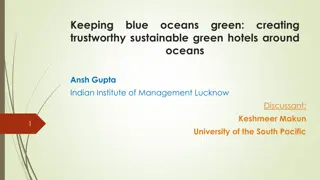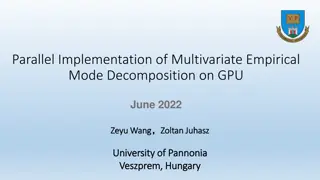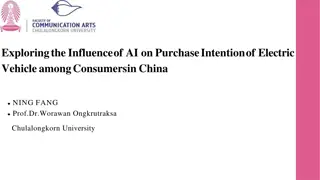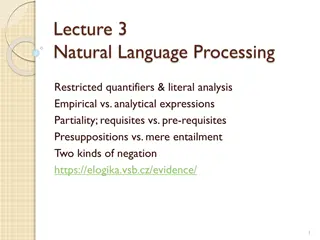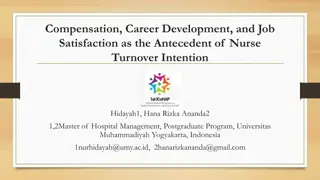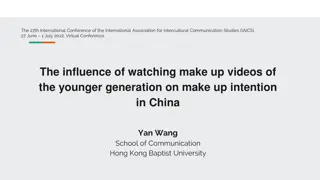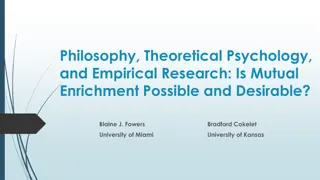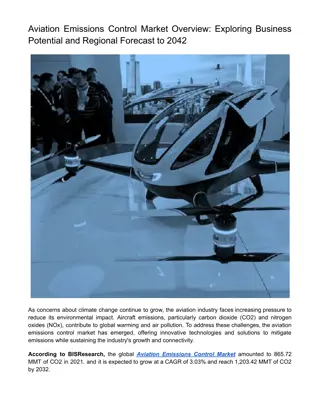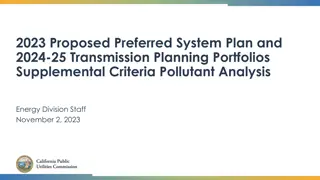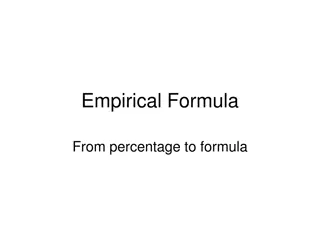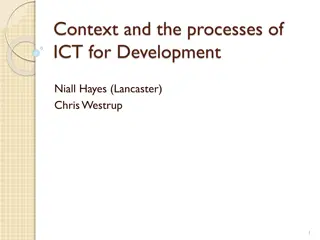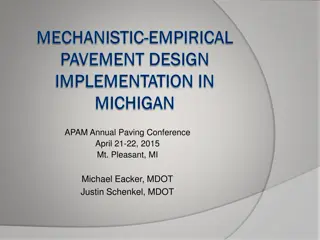Factors Affecting the Intention to Adopt MMT: An Empirical Study Among M-Pesa Customers in Kenya
The study explores the factors influencing the intention to adopt mobile money transfer (MMT) among M-Pesa customers in Kenya. It delves into performance expectancy, effort expectancy, and social influence as key determinants of adoption behavior based on empirical research findings.
Uploaded on Apr 13, 2025 | 0 Views
Download Presentation

Please find below an Image/Link to download the presentation.
The content on the website is provided AS IS for your information and personal use only. It may not be sold, licensed, or shared on other websites without obtaining consent from the author.If you encounter any issues during the download, it is possible that the publisher has removed the file from their server.
You are allowed to download the files provided on this website for personal or commercial use, subject to the condition that they are used lawfully. All files are the property of their respective owners.
The content on the website is provided AS IS for your information and personal use only. It may not be sold, licensed, or shared on other websites without obtaining consent from the author.
E N D
Presentation Transcript
ICHTS 2019 ICHTS 2019 2nd International Conference on Humanities, Technology and Science Title: FACTORS AFFECTING THE INTENTION TO ADOPT MMT: AN EMPIRICAL STUDY AMONG M-PESA CUSTOMERS IN KENYA. Khadidga Ayed , P.Pathmanaban A/L C.M. Pappayah Presenter Name: Khadidga Ayed ICHTS 2019
Outlines Introduction Literature review and hypotheses Methodology Analysis Research result and discussions Conclusion ICHTS 2019
Introduction The intention to adopt the Mobile money transfer technology has reduced communication costs in developing world, especially in Kenya ( Jack, et al.,2011) According to the latest formal studies: - The number of mobile cellular subscribers in Kenya grown vastly to reach 42,815,109 million in 2017 (Theworldbank, 2019). -Tracker (2018), the number of mobile money transfer subscribers reached 61% of the Kenyan populations in 2018 (TheWorldBank 2019). - The leading MMT company in Kenya is M-Pesa and its active user base has grown largely to reach 33.4 Million users in 2018 (MEDICI, 2019). As mentioned by Soko Directory(2019), the value of mobile money transactions in 2018 was equivalent to 44% of the GDP, and that illustrates the importance of the mobile money transfer (MMT) which is an essential part of the economic development in Kenya. The number of MMT user, M-Pesa users has increased significantly with Population and mobile subscribes which is considered very high to a short period of time, thus this paper examines the factors affecting the intention to adopt the mobile money transfer among M- Pesa customers in Kenya. ICHTS 2019
Literature review and hypotheses Intention to adopt mobile money transfer Mobile money transfer is the process of sending money from one person to another via phone activation which can be glorified in the end with cash transactions by a financial and commercial institution, also researchers proposed most of the studies on MMT fall between two major research areas relative to mobile technology which is mobile money transfer and mobile payment(Tobbin 2008 ; Mbiti and Weil 2014). Performance Expectancy Performance Expectancy (PE) has stated as the degree which an individual believes by using a new system will lead to the achievement of desired performance goals (Kupfer et al., 2016; Venkatesh et al., 2003). According to Brown et al. (2011), performance expectancy will save time for the users by using mobile payment that would give advantages to consumers that will allow them to attain their achievements quickly. Cao & Niu (2019) examined the relationship among the ubiquity and Alipay user intention to adopt is just mediated via the performance expectancy, the findings show that there is high significant influence. H1: Performance expectancy positively influences customers intentions to adopt mobile money transfer Effort Effort expectancy (EE) is defined as easy to use means when the users feel the new technology does not need much effort, then they will embrace the new technology(Chaouali et al., 2016). Thus, previous studies have pointed out that effort expectancy has a significant impact on behavioral intention to adopt mobile money transfer services (Martins et al., 2014; Rahi, Ghani and Ngah, 2018; Riffai et al., 2012). H2: Effort Expectancy positively influences customers intentions to adopt mobile money transfer. Expectancy Social influence Social influence(SI) pointed out to the level to which people realized that significant others, for instance, when family and friends, thought should use a technology (Martin & Herrero, 2012). Zhou et al. (2010) stated that social influence was a significant impact on the intention to adopt mobile money transfer services. H3: Social influence positively influences customers intentions to adopt mobile money transfer. ICHTS 2019 ICHTS 2019
Methodology Variables Number of items Reference Sources Quantitative Approach/ Type of study DV. Intention to adopt the mobile money transfer 5 (Mahfuz et al.,2015), (King ori, 2015), (Baariu,2015). M-Pesa customers in Kenya 120 Respondents Population IV1.Performance expectancy 5 (Humaid and Ibrahim,2019), (Foon and Fah,2011) (Cao and Niu,2019). Respondents Survey Questionnaire Instrument/ Approach IV2.Effort expectancy 5 (Humaid and Ibrahim,2019), (Foon and Fah,2011), (Cao and Niu,2019). Likert Scale Measurement Cross-Sectional Gathering Process IV3.Social Influence 5 (Humaid and Ibrahim,2019), (Foon and Fah,2011) (Cao and Niu,2019). SPSS Software Analysis Tools ICHTS 2019 ICHTS 2019
Analysis Independent variables Pearson correlation (r) Sig .(2-tailed) Gender Age Female (60%) Performance expectancy Between 30to 39 years old (64.7%) 0.887 0.000 Education background Masters (33.6%) Social influence 0.963 0.000 Effort expectancy Between Kshs5,000 to Kshs10,000 (36.7%) Monthly income 0.965 0.000 **Correlation is significant at the 0.01 level (2-tailed) Dependent variable: intention to adopt the mobile money transfer Do you use mobile transfer services most of the customers who are using mobile transfer services with ( 97.5%) Often using mobile transfer service ( 57.5%) How often do you make use of mobile transfer services How long have you been using mobile transfer services Between 3 to 6 months( 41.7%) ICHTS 2019 ICHTS 2019
Research result & discussions Developed Hypotheses Degree of association1 Impact2 The outcomes H1: Performance expectancy positively influences customers intentions to adopt mobile money transfer. Against Waitara (2016), with Kuria Positive/ strong Negative significant Cao and Niu (2019) H2: Effort expectancy positively influences customers intentions to adopt mobile money transfer. Line al.(2010), Dwivedi, & Williams, (2016) with Im Alalwan, et Positive/ strong Positive significant H3: Social influence positively influences customers intentions to adopt mobile money transfer. Line Zhou et al. (2010), Taylor et al. (2011) Positive/ strong Positive significant Notes: 1Association / degree of association : based on the correlation analysis 2 Impact; based on the Coefficients analysis ICHTS 2019
Conclusion In a nutshell, this research provides value implications to academic practitioners as well as scholars in the sector of mobile money transfer. A few empirical researches have been investigated on the intention to adopt the mobile money transfer service from the perspective of consumers' perceived values. This research contributes to developing the literature investigating the factors affecting the intention to adopt mobile money transfer among M-Pesa customers in Kenya. ICHTS 2019


